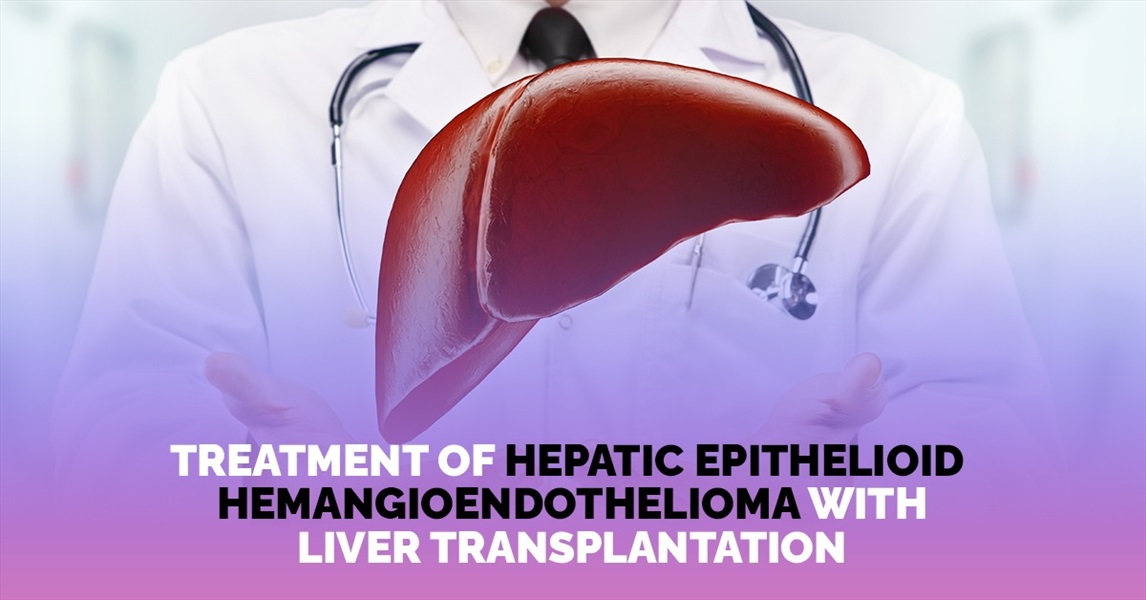Umpredictable scientific research n.1: Treatment of Hepatic Epithelioid Hemangioendothelioma With Liver Transplantation
Scientific research is fascinating and often unpredictable. I want to provide three examples of something that happened to me that demonstrates that imagination and curiosity are essential in discovering scientific development. Still, possibly, persistence is even more critical.
Today, I will describe how I demonstrated the successful role of liver transplantation in the epithelioid hemangioendothelioma of the liver. In 1987, the pioneer of liver transplantation, Thomas E. Starzl, asked me to review almost 1,000 liver transplantations performed by his team in Denver and Pittsburgh. Thomas Starzl asked me to focus mainly on the outcome of patients transplanted because of a liver tumor. Several patients underwent liver transplantation with the diagnosis of angiosarcoma. Most of them died shortly after the surgical procedure because of tumor recurrence. Instead, a small group of them were still alive and well, some with a 10-year follow-up. We examined the original pathology again and discovered that the small group of patients doing well did not have an angiosarcoma but an epithelioid hemangioendothelioma. From that moment, this disease became a worldwide indication for treatment with liver transplantation.
Treatment of Hepatic Epithelioid Hemangioendothelioma With Liver Transplantation
by IGNAZIO R. MARINO, MD, SATORU TODO, MD, ANDREAS G. TZAKIS, MD, GORAN KLINTMALM, MD, PHD,’ MICHAEL KELLEHER, MD, SHUNZABURO IWATSUKI, MD, THOMAS E. STARZL, MD, PHD, AND CARLOS 0. ESQUIVEL, MD, PHD
Ten patients received liver transplants for unresectable epithelioid hemangioendothelioma (EHE). At the time of transplantation, four patients had microscopic metastases to the hilar lymph nodes, and one of the four also had metastases to a rib. The fifth patient had metastases to the lung, pleura, and diaphragm, The remaining five patients were believed to be free of metastatic disease. Two of these five patients died of metastatic disease at 3 and 16 months, respectively, after transplantation. Interestingly, all five patients with metastatic involvement are currently alive 40.6 +/- 22 months (mean +/- standard error of mean [SEMI) after transplantation, although one of these patients currently has metastatic disease to the lungs and mediastinum. Thus, the projected 5-year actuarial survival rate is 76%, with two patients at risk after the thud year. In conclusion, liver transplantation is a reasonable procedure for bulky, otherwise unresectable, EHE even in the presence of metastatic disease.
Cancer 62:2079-2084, 1988.
EPITHELIOID HEMANGIOENDOTHELIOMA (EHE) is a soft tissue malignant tumor that is characterized by its epithelioid appearance and vascular endothelial histogenesis. It was specifically identified histologically by Weiss and Enzinger1 in 1982. In 1975, a similar if not identical tumor occurring in the lung was described by Dail and Liebow who proposed the term “intravascular bronchioalveolar tumor.”2 In 1984, Ishak el al. reported for the first time 32 patients with primary EHE of the liver.3
The current definition of EHE as a unique form of vascular lesion consisting of endothelial cells is based on the presence of immunohistochemical staining for Factor VIII-related antigen in the tumor.1-5 Using this specific definition, only a few cases of EHE have been described in the literature, particularly as primary hepatic malignancies, although EHE may occur more often than it is reported.1,6-8
The therapeutic approaches used in the clinical management of this tumor have been variable because of the limited clinical experience with this malignancy. There have been two separate single case reports of patients with EHE who have been treated with orthotopic liver transplantation ( OLT). 9,10
Herein we report the results with hepatic transplantation in ten patients with EHE. In each of these patients, the tumor was unresectable using any of several different conventional subtotal hepatectomy procedures.
Patients and Methods
Patient Profile
Between March 1963 and October 1987, 1281 patients had transplants performed at either the University of Colorado or University of Pittsburgh Health Centers or the Baylor University Medical Center. In 9 1 of these patients (7.1%), the indication for OLT was a primary hepatic malignancy that could not otherwise be resected. The histologic diagnosis in ten of these 91 patients was EHE. Only one of these ten patients has been reported currentlly.3 Their ages ranged from 24 to 52.5 years (median age, 29.5 years). Six of ten patients were female.
After OLT, the immunosuppression consisted of azathioprine and prednisone for the first two patients and cyclosporine and prednisone for the subsequent eight patients.
All ten patients were evaluated initially in different institutions. They were referred to one of our hospitals for liver transplantation because the malignant lesions were deemed unresectable except as a total hepatectomy. Before transplantation, the patients were subjected to a thorough evaluation to rule out the presence of any metastatic disease. This included an ultrasonographic examination of the abdomen (with particular attention to the presence of any vascular lesions), computerized axial tomography of the chest, abdomen, and head, a bone scan for the detection of metastases, complete upper and lower gastrointestinal endoscopy, and chest roentgenograms. Occasionally, an arteriogram or laparoscopy also was performed.
The correct diagnosis of EHE was known preoperatively in six patients. In two other patients, the diagnosis was not made until the excised liver was examined histologically and Factor VIII-related antigen was detected immunocytochemically as being present within the tumor cells. The initial histopathologic diagnosis was erroneous in two patients (the first two). A recent review of their histologic material showed the correct diagnosis.
[...] Read full article
RERENCES
1. Weiss SW, Enzinger FM. Epithelioid hemangioendothelioma: A vascular tumor often mistaken for a carcinoma. Cancer 1982; 50:970- 981.
2. Dad DH, Liebow AA. Intravascular bronchioalveolar tumor (Abstr). Am J Pathol 1975; 78:6.
3. Ishak KG, Sesterhenn IA, Goodman MZD, Rabin L, Stromeyer FW. Epithelioid hemangioendothelioma of the liver: A clinicopathologic and follow-up study of 32 cases. Hum Pathol 1984; 15:839-852.
4. Fukayama M, Nihei Z, Takizawa T, Kawaguchi K, Harada H, Koike M. Malignant epithelioid hemangioendothelioma of the liver, spreading through the hepatic veins. Virchaws Arch [A] 1984; 404:275- 287.
5. Sternberger LA, Hardy PH, Cuculis JJ, Meyer HG. The unlabelled antibody enzyme method of immunohistochemistry: Preparation and properties of soluble antigen and antibody complex (horseradish peroxidase-anti-horseradish oxidase) and its use in identification of spirochaetes. J Histochem Cytochem 1970; 18:3 15-333.
6. Echevema RA, Arean VM, Galindo L. Hepatic tumors of long duration with eventual metastases: Two cases of leiomyosarcomatosis possibly arising from hamartomas of liver. Am J Clin Pathol 1978; 69:624-631
7. Ludwig J, Grief MW, Hoffman HN, McGill DB. Calcified mixed malignant tumor of the liver. Arch Pathol 1975; 99:162-166.
8. Persaud V, Bateson EM, Bankay CD. Pleural mesothelioma as- sociated with massive hepatic calcification and unusual metastases. Can- cer 1970; 26:920-928.
9. Dean PJ, Haggitt RC, OHara CG. Malignant epithelioid hemangioendothelioma of the liver in young women: Relationship to oral contraceptive use.. Am J Surg Pathol 1985; 9:695-704.
10. Clements D, Hubscher S, West R, Elias E, McMaster P. Epithelioid hemangioendothelioma: A case report. J Hepatol 1986; 2:44 1-449.
11. Starzl TE, Iwatsuki S, Esquivel CO el a/. Refinements in the surgical technique of liver transplantation. Semin Liver Dis 1985; 5349- 356.
12. Dixon WJ. BMDP Statistical Software Manual. Los Angeles: University of California Press, 1985.
13. Esquivel CO, Iwatsuki S, Marino IR, Markus BH, Van Thiel D, Starzl TE. Liver transplantation for hepatocellular carcinoma and other primary hepatic malignancies. In: Sugahara K, ed. New Trends in Gastroenterology. Kyoto, Japan: Shinkoshu, 1987; 323-332.
14. Stan1 TE, Iwatsuki S, Shaw BW Jr, Gordon RD, Esquivel CO. Immunosuppression and other nonsurgical factors in the improved results of liver transplantation. Semin Liver Dis 1985; 5:334-343.
15. Dail DH, Liebow AA, Gmelich JT el a!. Intravascular, bronchiolar, and alveolar tumor of the lung (IVBAT). Cancer 1983; 51:452-464.
 06.60301809
06.60301809






